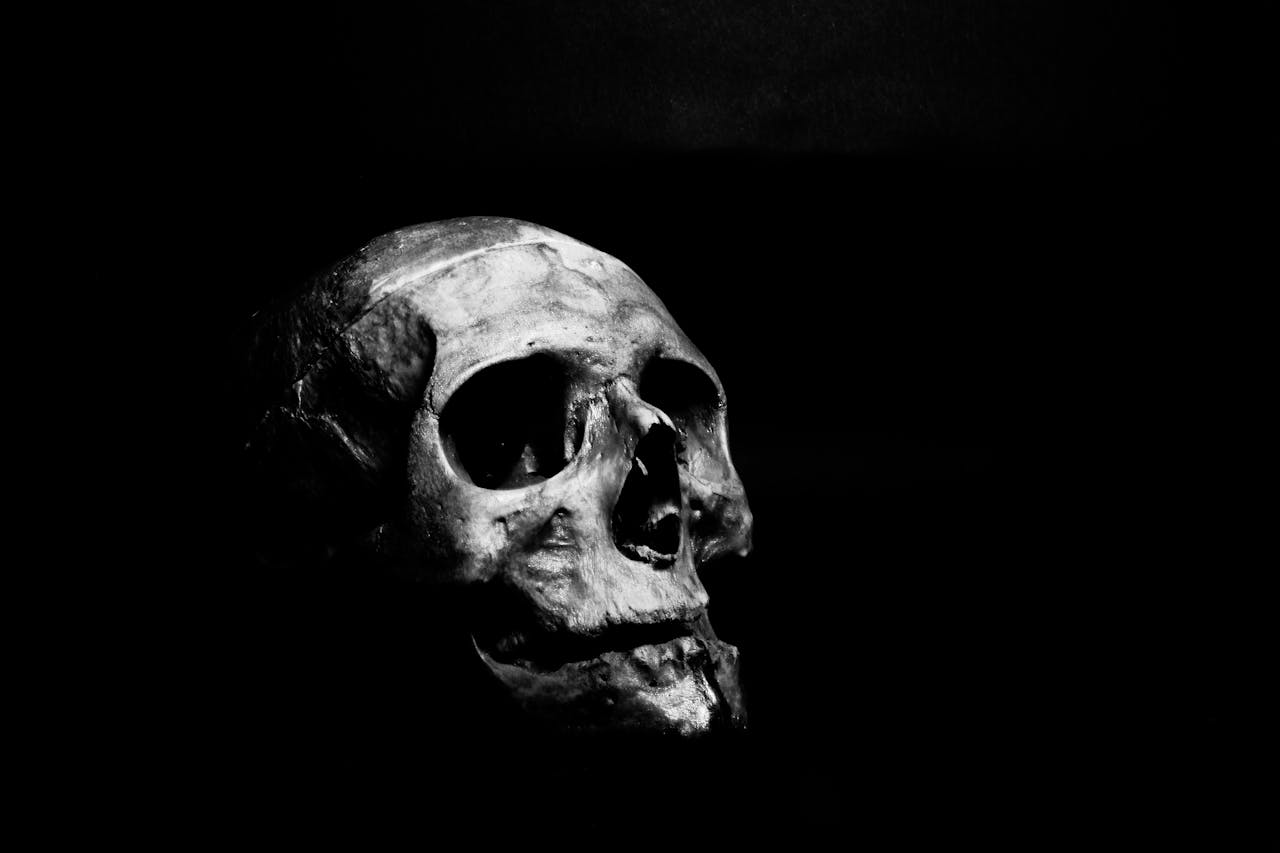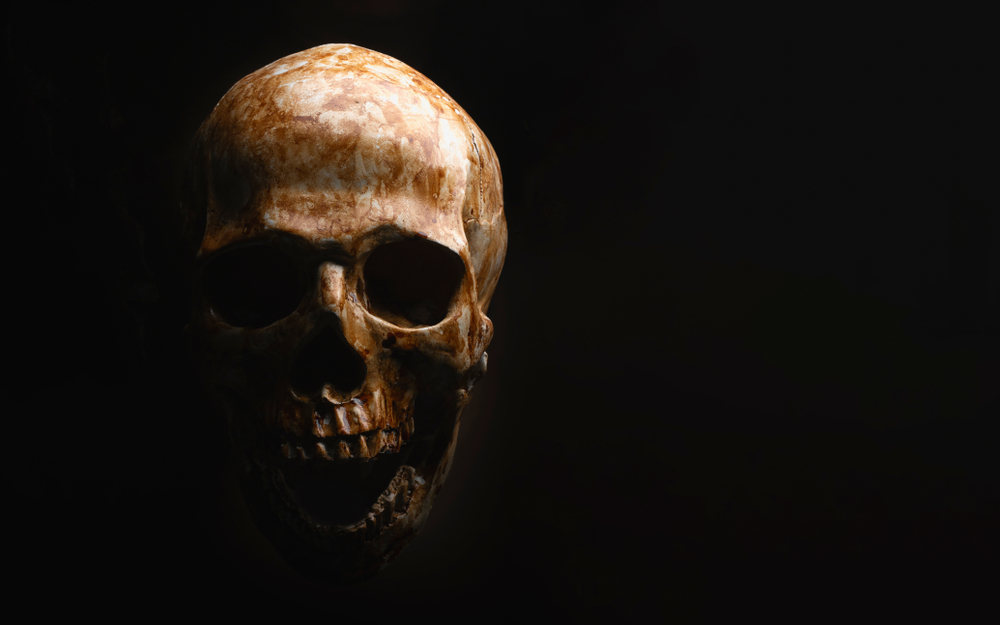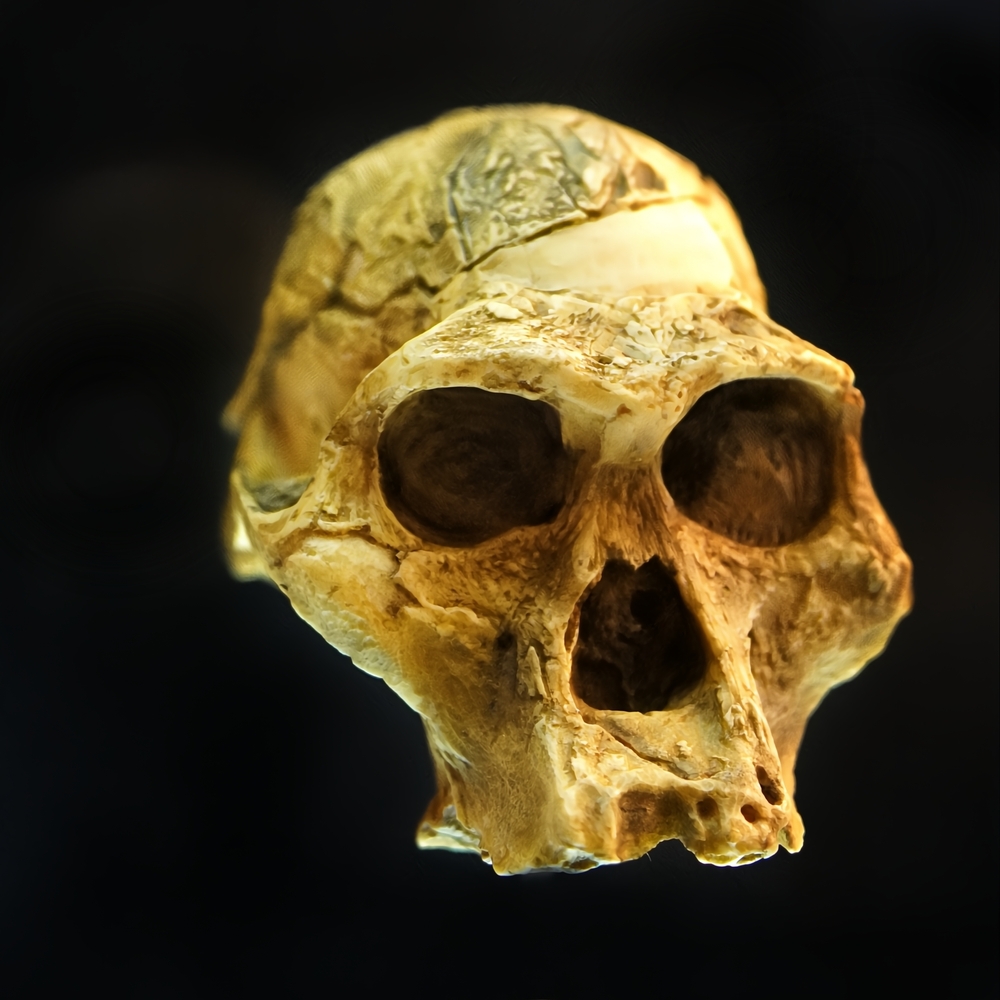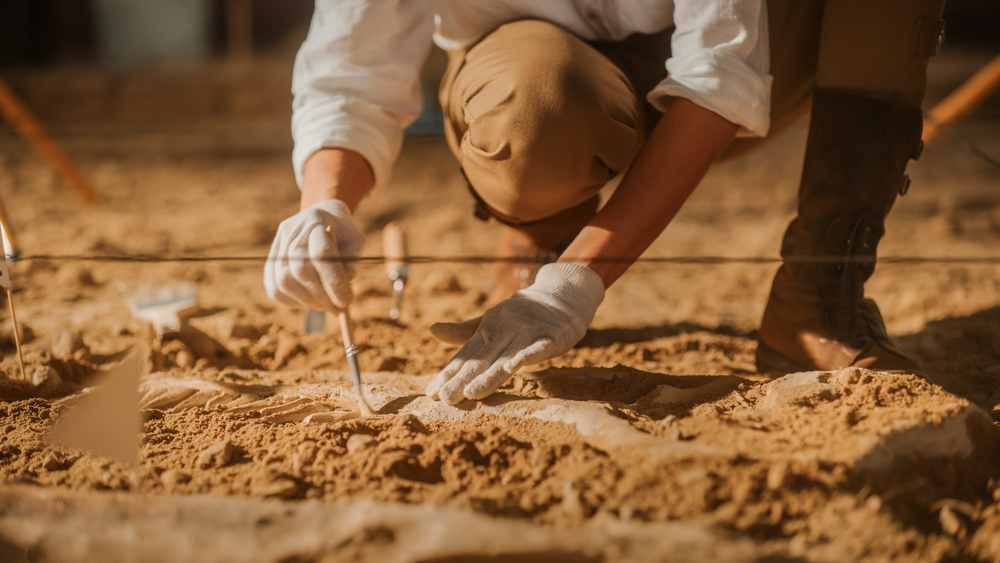Your cart is currently empty!
Ancient skull discovery may shift entire timeline of human evolution, scientists suggest

For decades, the story of human evolution has been told in a relatively tidy arc: Homo sapiens emerging around 300,000 years ago in Africa, gradually spreading across the globe, and branching off from our close relatives, the Neanderthals and Denisovans, somewhere around half a million years ago. That timeline has been taught in classrooms, featured in documentaries, and held as a cornerstone of our self-understanding. Yet the re-examination of a fossil known as Yunxian 2, a skull unearthed in central China and now dated to roughly a million years ago, is beginning to unravel this familiar story. According to researchers, the skull’s unusual combination of primitive and modern traits suggests that our lineage—or at least the common ancestor of modern humans—may have diverged far earlier than previously thought. If true, this would not just be a minor adjustment to evolutionary charts, but a fundamental rewriting of one of the most important chapters in human history.
The implications of this discovery are profound and extend far beyond the technicalities of fossil classification. It suggests that the human story may not have been confined solely to Africa during this critical period but instead shaped by a more complex interplay of populations spread across continents. This single skull, with its delicate balance of archaic and derived features, forces us to imagine human history less like a straight arrow and more like a tangled web of connections. Beyond the debates of scientists and academics, this discovery invites everyday reflection. It challenges us to consider how much of our past remains hidden, how fragile our assumptions really are, and how every new discovery is not an ending but a reminder that the story of humanity is still in the making. The Yunxian 2 skull is not just about bones and dates—it is a mirror reflecting the unfinished nature of human identity.

The fossil and its reanalysis
When Yunxian 2 was first unearthed in 1990 in Hubei Province, China, its significance was not immediately obvious. The fossil had been heavily deformed during the fossilization process, its bones crushed and warped to the point that precise interpretation seemed impossible. For years it was considered little more than another example of Homo erectus, a species name often used as a broad category for archaic humans scattered across Africa and Eurasia. Yet technology has a way of breathing new life into old remains. With the arrival of advanced CT scanning and digital reconstruction techniques, researchers were able to “uncrush” the skull virtually, peeling back the distortions of time to reveal what the skull may have originally looked like. This process allowed scientists to uncover previously hidden morphological details, effectively turning a damaged fossil into a fresh source of information.
What they found was striking. Yunxian 2 presented itself as a mosaic, blending traits that did not fit neatly into any single category. Its strong brow ridges and wide facial structure marked it as belonging to a lineage rooted in the more archaic hominins, yet its cranial capacity and certain aspects of its braincase shape leaned toward features associated with more modern humans. This unusual blend led some researchers to suggest that Yunxian 2 might belong not to Homo erectus but to Homo longi, a species recently connected to the mysterious Denisovans. That possibility is especially significant because Denisovans are known from genetic evidence to be close relatives of Homo sapiens. If Yunxian 2 truly represents such a lineage, then our timeline may need to be shifted back by as much as 400,000 years, creating new questions about when and where our own ancestors first emerged.
The importance of this fossil lies not only in its age but in its role as a bridge between epochs. It sits at a pivotal point between the older, more primitive hominins and the later, more “modern” humans. Its mixture of traits makes it a puzzle piece that doesn’t fit the existing picture but instead suggests the picture itself needs to be redrawn. This makes Yunxian 2 more than an academic curiosity. It is a challenge to prevailing frameworks, a prod that forces scientists to question whether long-held models of human evolution—particularly the timing of key divergences—are complete or overly simplistic. In this way, the fossil becomes both a piece of history and a catalyst for rewriting history itself.

What this challenges in the “standard” story
For much of the 20th and 21st centuries, the dominant story of human evolution has emphasized Africa as the singular cradle of humanity. Most estimates placed the split between modern humans, Neanderthals, and Denisovans between 500,000 and 700,000 years ago, creating a relatively late divergence that neatly aligned with fossil and genetic evidence from African sites. Yunxian 2, however, complicates this by suggesting that branching may have occurred significantly earlier, perhaps more than a million years ago. This pushes the roots of our species deeper into time and raises the possibility that Asia played a larger role in our development than previously acknowledged. While this does not erase Africa’s central role, it broadens the narrative into something less linear and more geographically diverse.
Paleoanthropologists have often referred to the period between one million and 300,000 years ago as the “muddle in the middle,” a phrase that captures the confusion of dealing with fossils that don’t fit easily into established categories. Yunxian 2 now takes its place firmly within this muddle, and in doing so, reopens debates about whether human evolution was truly a branching tree or something more intricate, like a braided river where populations diverged, reconnected, and influenced one another across continents. This interpretation moves us away from seeing evolution as a series of clean splits and instead toward viewing it as a fluid process with overlapping timelines and exchanges. Such a vision is not only more complex but also more reflective of the messy reality of life’s history.
The geographic implications are equally provocative. If Asia did play a role in the divergence of human lineages, then it means that our history is more global than once thought. The long-standing narrative of a singular origin followed by migration may need to be reframed as a story of multiple origins and continuous interactions across regions. Of course, this perspective remains controversial, and many experts caution against drawing definitive conclusions from a single fossil. Yet even the possibility compels a shift in thinking, reminding us that science thrives not on fixed answers but on the courage to revise old assumptions when new evidence demands it.

Skeptics and the limits of fossil interpretation
While the excitement surrounding Yunxian 2 is undeniable, skepticism remains a vital part of the scientific process. Many experts warn against leaning too heavily on morphological interpretation, which is the study of bone shapes and structures. Morphology can sometimes mislead because features that appear similar may not actually indicate close evolutionary relationships. They could be the result of convergent evolution, where different groups independently develop the same traits because of similar environmental pressures. This means that while Yunxian 2 looks like it shares traits with modern humans, those traits might not necessarily prove direct ancestry.
Another challenge lies in the limitations of fossil preservation itself. Fossils from this era are often incomplete, distorted, or damaged, and even the best reconstruction methods involve degrees of assumption. While CT scanning and digital modeling are revolutionary tools, they cannot fully eliminate uncertainties about what the skull looked like in life. Radiometric dating methods also provide ranges rather than exact points, and in this case, Yunxian 2 is estimated to be between 940,000 and 1.1 million years old—a wide window that leaves significant room for debate about its true place on the timeline. These uncertainties highlight why paleoanthropology is often as much about debate as it is about discovery.
The lack of genetic evidence further complicates the picture. For fossils younger than 500,000 years, scientists have occasionally been able to retrieve ancient DNA, which offers much more definitive insights into evolutionary relationships. But for specimens as old as Yunxian 2, DNA preservation is virtually impossible. Without genetic sequences, researchers must rely on morphology alone, which leaves room for interpretation and controversy. Some argue that Yunxian 2 might indeed be a branch related to Homo sapiens, while others insist it could simply be a regional variation of Homo erectus. This tension between bold claims and cautious skepticism is not a flaw of science but a reflection of its ongoing, self-correcting nature.

Why this matters—beyond bones
The fascination with Yunxian 2 does not lie solely in the fossil itself but in what it represents for how we think about humanity. If our lineage is older and more widespread than we assumed, it reframes our uniqueness in humbler terms. Rather than seeing Homo sapiens as a sudden spark of modernity, we might understand ourselves as part of a much deeper and more complex evolutionary tapestry. This perspective reminds us that survival, adaptation, and creativity are not traits that appeared overnight but qualities honed through countless generations of trial and error across millions of years.
This discovery also challenges the way we tell stories about ourselves. For generations, human evolution has been presented in textbooks and documentaries as a clean, heroic narrative: from Africa to the world, a straightforward triumph of intelligence and adaptability. But reality, as the Yunxian 2 skull suggests, is far messier and richer. Our ancestry may be woven from multiple threads, drawn from different regions and lineages that intersected and diverged over time. This makes the human story less like a linear path and more like an intricate fabric of connections. Rather than diminishing our origins, this complexity deepens them, offering a truer, more fascinating account of where we come from.
Perhaps most importantly, Yunxian 2 offers a lesson in humility about knowledge itself. Science does not hand us eternal truths but evolving understandings, built from the fragments of evidence we can recover. What seems certain in one generation can be overturned in the next. This is not failure but progress. Just as personal growth often comes from challenging old assumptions, so too does scientific growth arise from the willingness to question and revise. The skull from Yunxian is a reminder that even when we think we have the past figured out, the earth has more secrets waiting to be revealed.

Looking ahead: what to watch
The road to understanding the true significance of Yunxian 2 lies in gathering more evidence. New fossils from the crucial window between one million and 300,000 years ago will be essential for either supporting the idea that our lineage diverged earlier than expected or proving that Yunxian 2 is an exception rather than a rule. Excavations across Africa, Asia, and Europe are ongoing, and each discovery has the potential to reshape the debate. The more specimens we uncover, the clearer the picture becomes—though clarity in paleoanthropology often brings new complexities of its own.
Technological advances also hold promise. While DNA recovery from million-year-old fossils is unlikely, researchers are beginning to analyze ancient proteins, which can sometimes survive where DNA does not. Proteins offer a kind of molecular fingerprint that can help establish evolutionary relationships, potentially providing evidence that morphology alone cannot. Re-examining existing fossils with these techniques may yield fresh insights, revealing that many specimens long categorized under Homo erectus may actually belong to different, more closely related lineages.
Integration with other scientific disciplines will be equally important. Climate studies, for example, can shed light on the environmental conditions in which early humans lived, offering context for why populations may have migrated, adapted, or diverged. Archaeological evidence of tool use and cultural behavior can also help fill in the picture, showing not just what ancient humans looked like but how they lived. In this way, Yunxian 2 is not just a fossil—it is a spark that connects paleontology, genetics, climate science, and archaeology in the shared effort to understand the origins of humanity.
